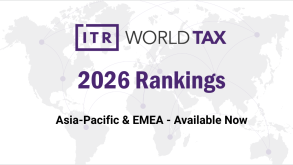The OECD's base erosion and profit shifting (BEPS) initiative is a response to the growing perception that governments lose substantial corporate tax revenue due to alleged BEPS activities by many multinationals. In 2013, the OECD developed an Action Plan with 15 key actions to address BEPS. The OECD then moved promptly to identify the resources needed, propose the methodologies to address the actions, and set deadlines to implement the actions. The key areas of focus of the OECD BEPS Action Plan include transfer pricing transparency and documentation, supply chain structures, financing structures, intellectual property structures, and common tax-efficient cross-border structures. Since the OECD is on target to complete addressing the Action Plan by the end of 2015, tax has become an increasingly significant political issue, and several tax authorities are already moving forward on the BEPS agenda independent of the agreement and finalisation of the OECD proposals.
While taxation in the oil and gas (O&G) industry is inherently complex and challenging for both the tax authorities and the taxpayer, the new, evolving landscape of BEPS poses more considerations and added nuances for cross-border tax issues. The BEPS Action Plan addresses several key areas of significance to O&G companies in the field of transfer pricing, including reporting, risk, services, and intangible property, which are discussed below.
New guidance on transfer pricing documentation requirements
Transfer pricing documentation is poised for the biggest change since the introduction of US penalty protection documentation rules in the mid-1990s. Under its BEPS initiative, the OECD issued revisions to Chapter V of the OECD transfer pricing guidelines that will significantly increase the type, amount, and transparency of information to be disclosed to tax authorities, resulting in an increased compliance burden on multinational companies engaged in cross-border transfers of goods, services, or intangible property.
Under the new guidance – issued through discussion drafts in 2014 as well as additional guidance in 2015 – taxpayers will be required to prepare three types of reports:
Master file
Local file
Country-by-country (CbC) report
Master file
The master file is designed to serve as a "blueprint" of the taxpayer group as a whole to allow local tax authorities to understand the context in which local transactions take place. The master file will provide key information about the group's global operations, including a high-level overview of the taxpayer's business operations along with important information on its IP activities, financing activities, supply chain, and overall value drivers.
Local file
The local file is meant to provide information and support of the intercompany transactions that the local entity engages in with related affiliates. In addition to the information traditionally found in transfer pricing documentation (such as the description of business, description of intercompany transactions, functional analysis, and economic analysis), the local file should contain details on the taxpayer's local management structure and reporting structure, a copy of advance pricing agreements and rulings related to the transaction (even if obtained in a different jurisdiction), and reconciliation of the financial data used in the analysis to the financial statements.
Notably, the new guidelines support the use of local comparable companies over regional or global comparables, provided local comparables are reasonably available. This requirement may increase the number of sets of comparable companies global O&G companies need to prepare. On the other hand, the new guidelines allow taxpayers to perform searches for comparable companies every three years – rather than every year – if the facts and circumstances of the intercompany transaction have not changed significantly. Taxpayers will still need to update financial information of the selected comparable companies on an annual basis.
Country-by-country report
One of the most significant changes came with the introduction of the CbC report. The CbC report is designed to serve as a risk assessment tool for the tax authorities by presenting key financial information on all group members on an aggregate country basis. Specifically, the CbC report, which provides a heightened level of transparency, is to contain information on revenues, profit/loss, tax paid and accrued, tangible assets, and number of employees, among other things.
In February 2016, the OECD released implementation guidance regarding CbC reporting that stated that the CbC report will be required for years beginning on or after January 1 2016, and only for groups with global revenues greater than €750 million ($827 million). The report is to be filed annually within 12 months of the fiscal year end. Usually, the ultimate parent company of the group will have the responsibility to submit the CbC report to its tax authority; however, a "surrogate" parent could be selected instead in certain circumstances for purposes of filing. The information would then be exchanged among the tax authorities using certain multilateral or bilateral mechanisms.
The amount and type of information required to be disclosed would lead to an unprecedented level of global transparency. Such transparency may highlight inconsistencies in the company's transfer pricing policies or the actual results among similar types of entities, or a disconnect between the locations of revenue recognition/profit generation and "value creation". These changes will call for tax departments to have a better handle on global transfer pricing outcomes through regular monitoring of results and developing more in-depth support for their global transfer pricing structure.
In addition to greater scrutiny of existing transactions, tax authorities will be in a position to focus on broader aspects of taxpayers' structures beyond the intercompany transactions applicable to their jurisdiction. For example, Tax Authority in Country A may argue that the local entity providing what the taxpayer believes to be contract R&D activities may in fact be creating significant value in Country A, and therefore be entitled to a portion of the return currently earned by the IP owner in Country B.
For multinational O&G companies operating in multiple jurisdictions, the data gathering exercise required to prepare the CbC report may pose a significant challenge as tax departments are already stretched thin in the current cost-cutting environment. Taxpayers are advised to perform a "test run" of CbC report preparation to identify and address any potential issues related to systems, data accuracy, or accessibility. Also, such an exercise may uncover potential issues with transfer pricing policies or results, so performing it well ahead of the filing deadline will give taxpayers a chance to address the issues before the data is "broadcast" to tax authorities around the world.
With regard to the master file, taxpayers that took a decentralised approach to preparing transfer pricing documentation will likely require a significant change in their transfer pricing compliance processes to control the preparation of the master file. Taxpayers are advised to perform a risk assessment of current intercompany transactions (as well as activities that are not being documented at present) and a review of current transfer pricing documentation scope to ensure they develop in-depth and globally consistent support for all material intercompany transfers.
Risk allocation and recharacterisation of transactions
In December 2014, the OECD issued a "Discussion Draft on Revisions to Chapter I of the Transfer Pricing Guidelines (Including Risk, Recharacterisation, and Special Measures)" proposing changes to Chapter I of the OECD transfer pricing guidelines. Subsequent to the release, the OECD received more than 850 pages of public comments and also held a public consultation. The significant interest was caused by some of the proposals outlined in the risk discussion draft that may impact many taxpayers.
The following is an overview of the main points in the risk discussion draft and their potential impact on the O&G industry, keeping in mind that the final guidance may differ from the proposal outlined in the discussion draft.
Identifying commercial and financial relations
The risk discussion draft expands the concept of a "transaction" to include situations in which value is transferred although no actual transaction is recorded. An example relevant to the O&G industry includes the transfer of know-how through seconded employees. Such a revision could lead to increased controversy as tax authorities may start identifying transactions where they don't necessarily take place. It may be prudent for taxpayers to develop an in-depth analysis of functions, risks, and contributions of each party to preempt such conclusions.
Identification and allocation of risk
The risk discussion draft emphasises that identifying risks is a critical part of a transfer pricing analysis, along with identifying functions and assets. But the allocation of risk between related parties can be based only on the actual conduct of the parties, and specifically, on their capability to manage and control risk.
Under the proposed revisions, risk management includes both the capability and the decision-making function in the following three areas:
Ability to make or decline risk-bearing opportunities;
Ability to respond to risks as they arise; and
Ability to employ risk mitigation strategies.
As a result, merely contractually allocating risk, or providing a certain entity a "limited risk" return, may not necessarily be respected unless it follows the allocation of risk based on the actual risk management activities.
The risk discussion draft states that trading a more certain, or lower risk, return for a less certain, or higher risk, return( the "risk-return trade-off) is not a sufficient justification for the risk transfer. Instead, the document argues that such a transfer should take place only if the transferee is better placed to manage the risk than the transferor. The OECD invited the public to comment whether such risk-return trade-off is appropriate under the arm's-length principle, and received feedback that such trade-offs are based on fundamental economic theory.
Nonrecognition and recharacterisation
The risk discussion draft proposes a new approach to determining whether actual intercompany transactions may be disregarded by tax authorities for transfer pricing purposes. Under the new guidance, a transaction should be respected for transfer pricing purposes only if it has the "fundamental economic attributes of arrangements between unrelated parties and commercial rationality". The risk discussion draft suggests that each affiliate involved in a transaction should have a reasonable expectation to enhance or protect its own commercial or financial positions, compared to other options realistically available to them. A litmus test would be whether the group would be better off on an overall pre-tax basis.
The proposed approach is likely to increase uncertainty and tax controversy, and potentially lead to double tax. Tax authorities would have more precedent for recharacterising a nonrecognised transaction, which could lead to potential documentation penalties.
Activities that may be affected by the changes proposed in the risk discussion draft may include commissionaire or limited-risk distributor entities, contract R&D services, and centralised asset ownership/leasing structures, which are common in the O&G industry. For example, a number of contract drilling services providers submitted comment papers expressing concern that the OECD proposals, including under the discussion draft, do not take into account some of the unique characteristics of the sector, such as the critical importance of an asset and its specifications, the need for asset mobility that's realised through centralised asset ownership, and the significant utilisation risks associated with owning such assets.
Overall, companies may want to consider "stress-testing" their existing structures to identify any potential gaps, and addressing them through ensuring sufficient local substance, maintaining consistency between the letter of the intercompany agreements and actual activities of the parties, and enhancing the support for the current pricing approach.
Services
Cost contribution arrangements
The OECD on April 29 2015, released a discussion draft on cost contribution arrangements (CCAs) under Action 8 that contains proposed revisions to Chapter VIII of the OECD's transfer pricing guidelines. Consistent with the current guidance, the CCA discussion draft applies to both service CCAs, in which participants share the cost of services, and development CCAs, in which participants share the costs and risk of developing property. The CCA discussion draft takes the position that the outcome of operating within the context of a CCA should be the same as if the CCA had not existed. Therefore, both initial contributions to the CCA and ongoing contributions must be measured by value rather than cost (with an exception for low-value services). The value of each participant's contribution is determined by reference to the other chapters of the OECD's transfer pricing guidelines, in particular Chapter VI for intangible development CCAs. The requirement that contributions be based on value rather than costs is more limiting than the current guidance, but aligns with the BEPS Action Plan and the increased emphasis on value splits. Nonetheless, the requirement to use value rather than cost is the change likely to have the greatest impact on existing service CCAs.
Two additional recent developments also affect how MNEs share and allocate services cost. On November 3 2014, the OECD issued a draft pursuant to Action 10 of the BEPS Action Plan that reduces the scope for erosion of the tax base through excessive management fees and head office expenses by proposing an approach that identifies a wide category of common intragroup services commanding a very limited profit mark-up on costs (low value-adding intragroup services). Second, the US Tax Court on July 27 2015, struck down the requirement in the 2003 US cost sharing regulations that participants in a qualified cost sharing arrangement share stock-based compensation costs (SBC). This also affects the allocation of SBC under services regulations, and will have an impact on how US-based MNEs share costs under service CCAs as well as development CCAs.
Services in O&G industry and BEPS considerations
The O&G industry has certain practices of its own when it comes to allocating intragroup services, which makes it important to examine intragroup services in light of these discussion drafts.
There is a plethora of intragroup services provided within the O&G industry that range from engineering and technical services to management, administrative, and other operations-related services provided by the corporate headquarters of industry participants. The types of arrangements under which intragroup services are provided within the O&G industry are not only unique but significant in terms of value. Industry participants often provide the same types of services at cost (or cost plus a small markup) to their related parties and third-party joint venture partners in the context of a joint operating agreement or a production sharing contract. The pricing to third parties has often been treated as comparable uncontrolled service prices (CUSPs) to determine related-party pricing. However, in the US, the use of CUSP in analysing such transactions has been challenged in some cases, as the IRS has relied on the services regulations promulgated under Treas. Reg. §1.482-9 to compel O&G companies to include both stock option expenses and a profit element in their charges to affiliates, irrespective of whether foreign tax authorities, joint venture partners, or national oil companies will accept such charges. At times, the markups required on audit have been very large.
With the proposed modifications for service CCAs still in discussion form, and any future change expected to conform to final decisions in other chapters, as well as the release on low-value adding services, taxpayers should keep an open eye on the evolving landscape. Players in the O&G industry with service CCAs governed by various local regulations should review the existing terms and conditions to identify potential differences with the CCA discussion draft, in particular regarding sharing "value" instead of "costs", and also watch out for the consequences of the recent US Tax Court ruling on charging out SBCs in the Altera decision.
Intangible property
Intangibles
The OECD on September 16 2014, issued revisions to Chapter VI of the transfer pricing guidelines, Special Considerations for Intangibles, as part of the BEPS deliverables. The OECD has adopted a broad definition of intangibles in the revised guidance that defines an intangible as something (1) that is not a physical asset or a financial asset; (2) is capable of being owned or controlled for use in commercial activities; and (3) whose use or transfer would be compensated had it occurred in a transaction between independent parties in comparable circumstances. Intangibles for transfer pricing purposes include know-how and trade secrets; trademarks, trade names, and brands; rights under contracts and government licenses, including contractual commitment to make a workforce available; licenses and similar limited rights in intangibles; and goodwill and ongoing concern value. The following are not considered intangibles under this release: market-specific characteristics (for example, local consumer purchasing power and location savings), and assembled workforce.
The guidance recognises that payment for use of an intangible should be made to the party with legal ownership of that intangible. However, when another party has participated in activity leading to the development, enhancement, maintenance, protection, or exploitation of an intangible, a separate transaction dealing with that activity must also be considered, in that, the legal owner has a transfer pricing obligation to pay for those activities it does not perform. The release further states that compensation for intangibles must be determined on the basis of ex ante information. In selecting a transfer pricing method to value intangibles, the guidance makes it increasingly likely that the method to be applied as the most appropriate will be the transactional profit split, the use of discounted cash flow techniques by requiring consideration of both parties' realistic alternatives, or other valuation techniques. Further, the pricing should be based on a functional analysis that provides a clear understanding of the MNE's global business processes and how the transferred intangibles interact with other functions, assets, and risks that comprise the global business and factors that contribute to value creation, including specific market characteristics, location, business strategies, and MNE group synergies, among others. The risk discussion draft provides additional draft guidance on risk and value creation as it relates to any intragroup transaction, including intangibles.
Hard-to-value intangibles
The OECD on June 4 2015, released a non-consensus discussion draft on Action 8 regarding hard-to-value intangibles (HTVI). Intangibles that fall within this category may exhibit one or more of the following features: intangibles that are only partially developed at the time of the transfer; intangibles that are not anticipated to be exploited commercially until several years following the transaction; intangibles that separately are not HTVI but that are connected with the development or enhancement of other intangibles that fall within the category of HTVI; and intangibles that are anticipated to be exploited in a manner that is novel at the time of the transfer. The discussion draft states that, when valuation of an intangible or rights in an intangible at the time of the transaction is highly uncertain, and questions arise as to how arm's-length pricing should be determined, the questions should be answered by reference to what independent enterprises would have done "to take account of the valuation uncertainty." For example, independent parties may agree upon: use of ex ante pricing, adopt shorter-term agreements; include price adjustment clauses in the agreement; adopt payment structures involving periodic milestone payments; adopt a royalty rate set to increase as the licensee's sales increase; or agree to renegotiate the pricing arrangement if major unforeseen developments occur, changing the fundamental assumptions on which the pricing was determined.
Intangible development CCAs
Besides the considerations required for service CCAs, MNEs that have existing intangible development CCAs in place – in particular cost sharing arrangements (CSAs) that comply with the US cost sharing rules – should be alert and watch for the final CCA rules to determine to what extent the final CCA guidance is inconsistent with existing local regulations, and to what extent additional actions may be required to address those inconsistencies. MNEs that have an entity that is a participant in a CSA governed by the US cost sharing regulations should be aware that the CCA draft takes a very different approach to the taxation of CCAs than the US regulations in several ways.
Intangibles in O&G industry and BEPS considerations
The O&G industry has unique practices of its own when it comes to developing and sharing intangibles, which makes it critical to examine the transfer pricing-related to intangibles under the light of the above-noted discussion drafts. There is an added complexity in this industry because of the gray area that lies between services and intangibles, as noted below.
O&G companies employ processes, know-how, and technologies to find and produce hydrocarbons. The distinction between the provision of a service and the provision of a service bundled with an intangible is somewhat nebulous, especially in the O&G industry. To break this conundrum, it is important to consider whether there is anything proprietary associated with the service, whether the recipient is obligated to employ the results of such services, and if the services are accompanied by a manual or any other device that "has substantial value independent of the services of any individual." The IRS's position in this regard appears to suggest that US-based engineers and scientists working for exploration and production (E&P) companies produce value at well sites in remote places such as the North Sea and West Africa by combining their expertise with US-developed intangibles. Currently, the US and OECD transfer pricing regimes accommodate a range of approaches for dealing with the issue. Depending on the characterisation of the transaction, a taxpayer can elect to classify it as a complex engineering service, or a service bundled with intangible property. Under the evolving BEPS landscape and expanded definition of intangibles, O&G companies will have to perform a detailed functional analysis and determine risk characterisation to distinguish between high-value services versus intangibles.
A nuance of intangibles used by E&P companies is that these have often been developed in tandem with petroleum engineers and geoscientists at major universities, industry consortia, and oilfield services firms. These non-proprietary assets are shared freely, in certain cases, with joint venture partners and NOCs in the quest for hydrocarbons, typically on a royalty-free basis. Due to this ambiguity of ownership and the openness by the industry to share knowhow, leading practices and technology, allocating a price to this expertise may remain convoluted. Further complicating intragroup intangible valuations is the fact that there are so many different services, processes and intangible assets coming together at the well site to produce hydrocarbons. Few of these assets are significant on a standalone basis; it is therefore difficult to value their separate contributions. In other industries, a royalty payment for the value of the intangibles would be paid in an effort to appropriately compensate the intangibles owner; in the O&G sector, bifurcating the revenue stream from the sale of the resulting hydrocarbons between the amount resulting from the use of the IP (be it a tool, technique, process, or patent) and that associated with more routine contributions is very difficult because of the complexity of activities at the wellhead. To avoid these complications, and when the delivery of certain services involves an IP component, some E&P companies and oilfield services companies have chosen to pursue expansive, multiparty CSAs whereby all legal entities share in the cost of intangible development and are allowed the use of the resulting IP on a royalty-free basis. O&G companies will have to examine the intangibles licensed and shared under the expansive definition of intangibles under Action 8 and take into consideration a detailed functional analysis and risk characterisation that includes value creation and risk, determine HTVI as well as consider intangible development CCAs and the associated releases under the evolving BEPS landscape.

|
|
Nadim RahmanSenior Manager, Transfer Pricing Deloitte Tax LLP 225 West Santa Clara Street San Jose, CA 95113 Tel: +1 408 704 2567 Nadim Rahman is a senior manager with Deloitte Tax in San Jose, CA. He has more than 10 years of transfer pricing experience working in the Texas and California markets, spanning several industries. Nadim has extensive experience working with the largest oil and gas companies and with several of the largest oilfield services companies. During his tenure with Deloitte, he has managed various projects for large Fortune 500 clients, overseeing projects related to global documentation, headquarter cost allocation, intangible valuation, cost sharing, intercompany financing, planning studies, audit defence, competent authority assistance and APA. He has developed client service relationships with companies in the US, Europe, Asia and Latin America. Nadim specializes in simplifying complex situations for clients, primarily focusing on the energy value chain. |

|
|
Vitaliy VoytovychDirector, Transfer Pricing Deloitte Tax LLP 1111 Bagby Street, Suite 4500 Houston, TX 77002 Tel: +1 713 982 2910 Vitaliy is a director in Deloitte Tax's Houston, Texas transfer pricing practice. He has more than 11 years of experience in transfer pricing and economic analysis. Before his career in transfer pricing, Vitaliy was an Economist with a private equity firm, and also worked in the IT consulting industry. Vitaliy specialises in the oil and gas industry (oilfield services and equipment, exploration and production, drilling, marketing, LNG) but has considerable experience in a number of other industries as well, including engineering services, semiconductors, and chemicals. He has extensive experience managing large transfer pricing engagements, including US and global documentation and planning studies, advance pricing agreement (APA) negotiations, and audit defence work. |









